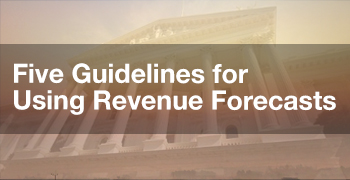
December Income Taxes Far Above June Budget Act Projections January 8, 2015
The preliminary December 2014 income tax totals increase the chances that General Fund revenues in 2014-15 will be billions of dollars above what our office projected a few weeks ago.
State and Local Governments With Their Own EITCs January 6, 2015
We provide links to other states' and localities' tax agencies that administer their own EITCs.
November 2014 California Jobs Report December 19, 2014
In most months, we will provide analysis of the Employment Development Department's monthly California jobs report.
Prior California EITC Legislative Proposals December 18, 2014
Bills to create a state EITC in California have been introduced in the Legislature before. None have been enacted into law.
Key Resources Concerning Federal EITC December 18, 2014
We provide information on some key resources concerning the federal earned income tax credit.
What is the Federal Earned Income Tax Credit? December 18, 2014
The federal EITC is a major tax program whose purpose, over time, has moved toward increasing the rewards for paid work and reducing poverty.
Taxes Available for Retiree Health Costs Under Prop. 2 December 17, 2014
Proposition 2 sets aside a portion of California's General Fund tax money for 15 years for certain debt payments, including, potentially, payments to reduce the state's large unfunded retiree health liability.
Housing Costs Have Grown Faster Than Incomes December 17, 2014
Since 2002, on an inflation-adjusted basis, housing costs in California have grown faster than the total change in median household income.
Californians Spend More of Their Income on Housing December 17, 2014
Across the state, Californians spend more of their income on housing compared to residents in other states' metropolitan areas.
California Home Prices Rising Again December 16, 2014
2013 was the first year since 2006 in which California home prices increased significantly.
California Housing Construction Recovering Slowly December 16, 2014
Building permits for residential construction dropped sharply after the collapse of the housing bubble. They are recovering slowly.
14-15 State Revenues $1.6 Billion Over Budget Forecast as of 11/30 December 16, 2014
The Department of Finance's Finance Bulletin, today's version of which includes November 2014 revenue data, is the key report on state revenues each month.
Counties, Cities, Special Districts Receive Variety of Revenues December 16, 2014
The property tax is the largest source of local tax revenue for all local governments combined.
Allocation of Property Tax Has Varied Over Time December 16, 2014
Since passage of Proposition 13 in 1978, the allocation of local property taxes has changed several times.
California Governments Rely on a Variety of Taxes December 16, 2014
The state government and local governments, respectively, rely on different tax revenue sources.

















